News
An update from the Andean Bear Project
By Ximena Velez Liendo
The Andean Carnivore Conservation Program is a community-based conservation initiative that seeks to foster coexistence between people and large carnivores in Bolivia’s Interandean dry forest. It aims to understand the ecological and social dynamics of human-wildlife conflicts, to develop innovative and sustainable economic alternatives, which are crucial for the long-term survival of these species and the ecosystem.
Large carnivores are considered umbrella species because protecting these species indirectly protects the many other species that make up the ecological community of its habitat. In 2016, a UK-Bolivian conservation team founded the Andean Bear Project and started monitoring bears in one of the last remnants of Interandean dry forest in the world, the San Lorenzo Dry forest in Tarija Bolivia, and area of 1,000 sq km, or three times the size of Leeds! The Interandean dry forests are among the most fragmented, fragile yet understudied ecosystems. They are highly vulnerable to the impacts of climate change, and home to some of the poorest and vulnerable communities in Bolivia, as well as all three of the Andes’ top predators: jaguars, Andean bears and pumas.
With the support of Chester Zoo, Whitley Fund for Nature and Darwin Initiative, we have established a conservation initiative focused on to transform the negative interaction between local people and Andean bears, into one where human-bear co-existence becomes possible. This requires finding ways for the target community to benefit tangibly from the existence of conservation efforts, as well as valuing the existence of bears as natural heritage.
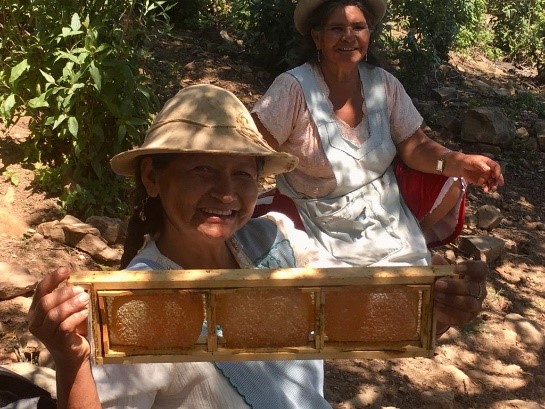
Monitoring the bear and other predators is crucial. During these three years we have witnessed not only the return of a healthy population of bears to the dry forest, but a record number of other carnivore species, in particular wildcats. Bolivia has nine species of cats, and in our study area we have registered seven species, the highest density in the entire country. During the next couple of months our camera trapping monitoring study will expand to jaguar’s territory where we have already photographed its natural prey (capybaras, deer, wild pigs and armadillos). In addition to felids, we have two species of canids, three species of mustelids including the neotropical otter, one species of Mephitidae (skunk), two species of Procyonidae (coati) and of course, the only species of the Ursidae family, the Andean bear.
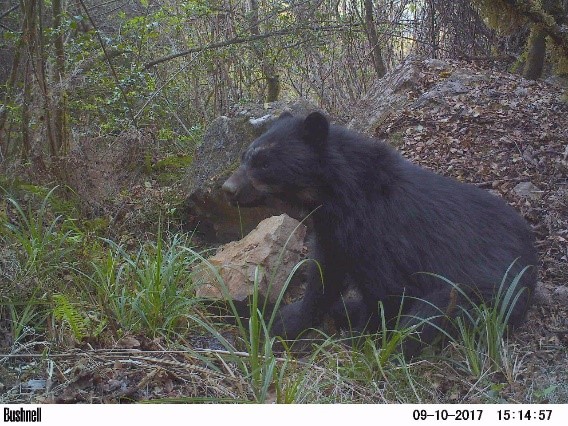 Due to the unusual case of coexistence of seven species of wild cats (Leopardus geoffroyi, L. weidii, L. tigrinus, L. garlepii, L. pardalis, Herpailurus yaguarondi and Puma concolor) in a patch of unprotected Interandean dry forest in southern Bolivia a manuscript has been prepared and it is under the last revision. This document not only reports this rare case, but the new occurrence records of Herpailurus yagouaroundi, Leopardus wiedii and Puma concolor in the region. Finally, this high density of cat species along with bears, foxes and cattle in a relatively small unprotected area highlights the necessity to work along with local people to protect such a high diversity site whilst reducing conflict and increasing the benefits of conservation.
Due to the unusual case of coexistence of seven species of wild cats (Leopardus geoffroyi, L. weidii, L. tigrinus, L. garlepii, L. pardalis, Herpailurus yaguarondi and Puma concolor) in a patch of unprotected Interandean dry forest in southern Bolivia a manuscript has been prepared and it is under the last revision. This document not only reports this rare case, but the new occurrence records of Herpailurus yagouaroundi, Leopardus wiedii and Puma concolor in the region. Finally, this high density of cat species along with bears, foxes and cattle in a relatively small unprotected area highlights the necessity to work along with local people to protect such a high diversity site whilst reducing conflict and increasing the benefits of conservation.
-
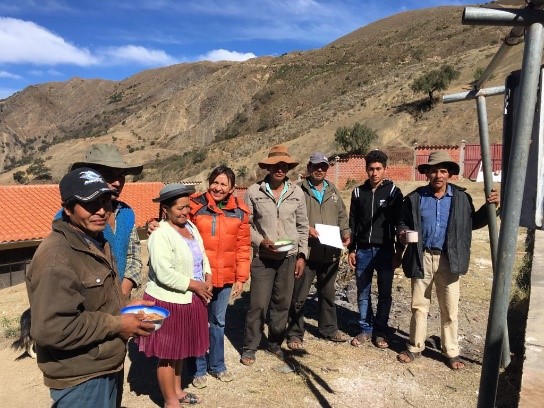 Ximena Velez Liendo photographed with community members involved in the Andean Bear Project
Ximena Velez Liendo photographed with community members involved in the Andean Bear Project -
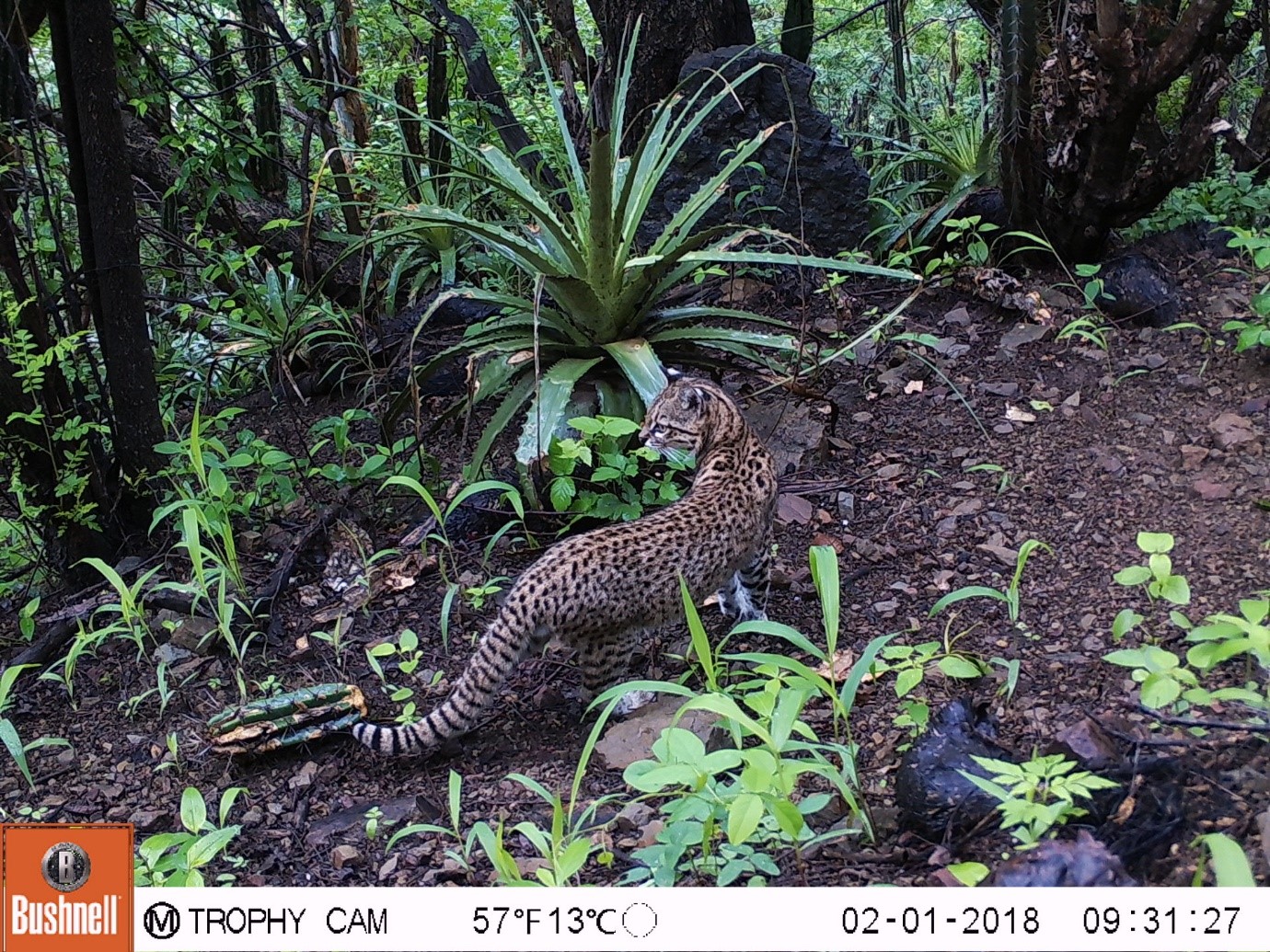 Geoffroy's cat (Leopardus geoffroyi)
Geoffroy's cat (Leopardus geoffroyi) -
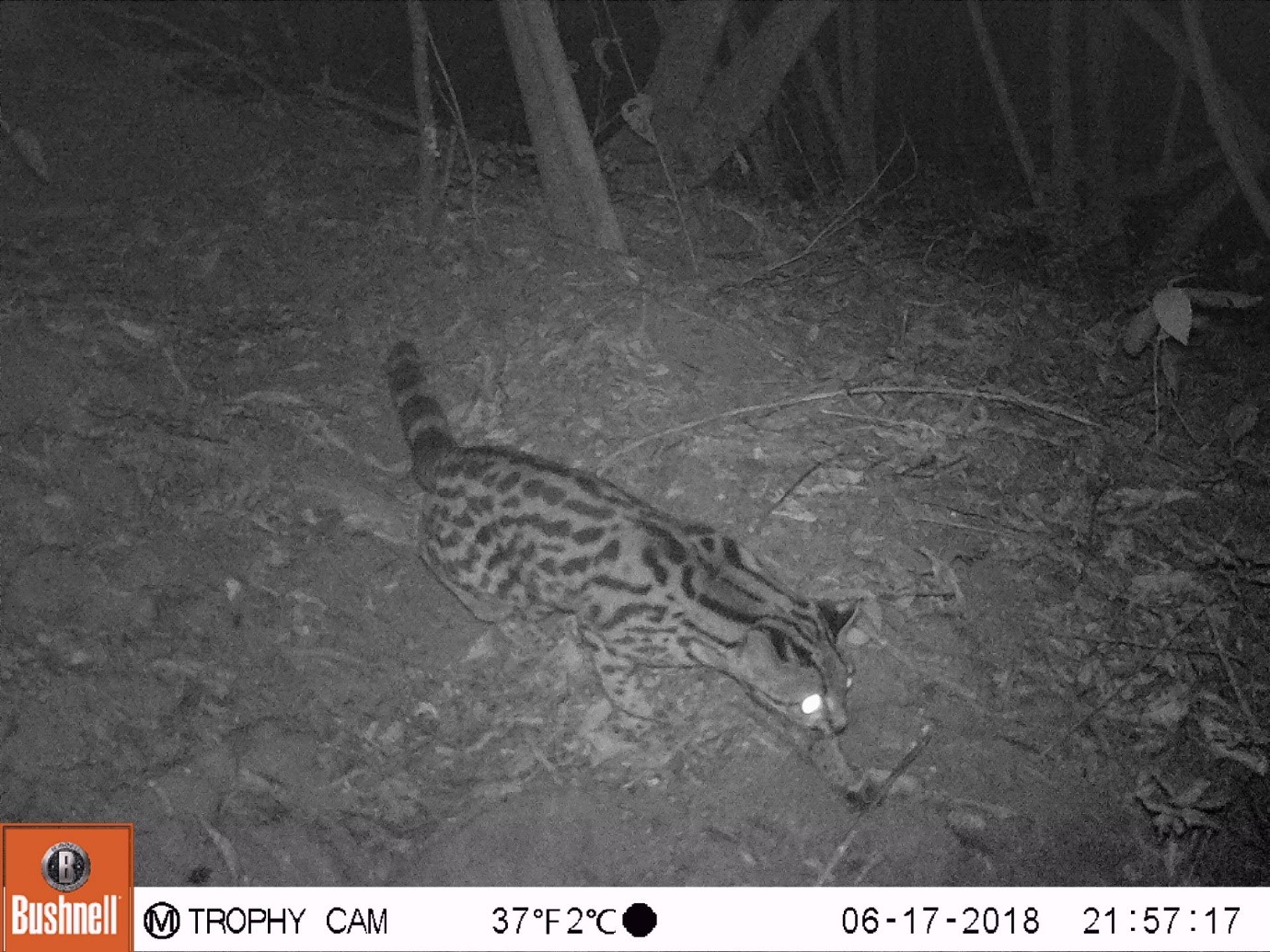 Margay cat (Leopardus wiedii)
Margay cat (Leopardus wiedii) -
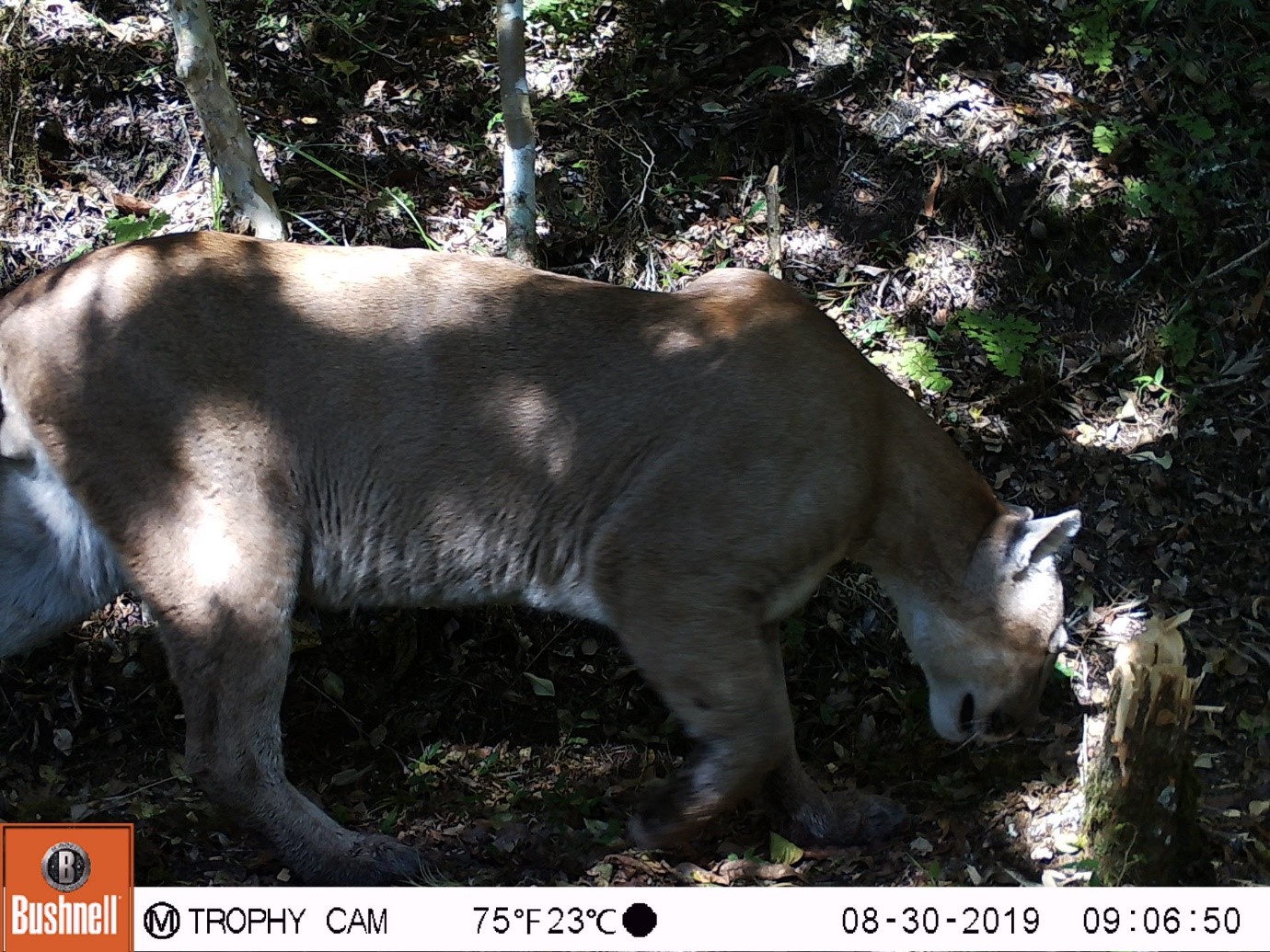 Puma (Puma concolor)
Puma (Puma concolor) -
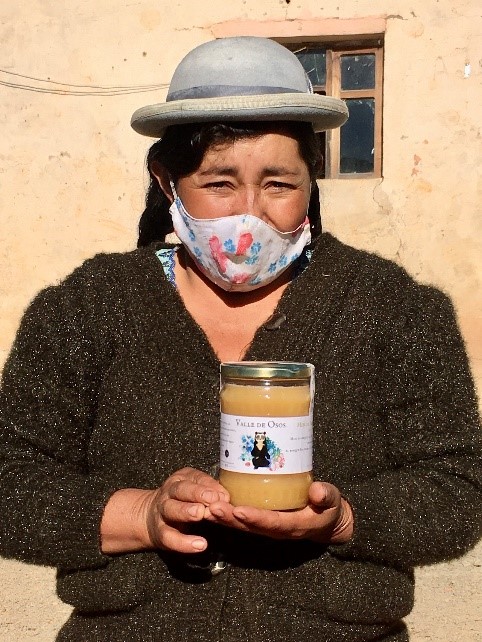 Honey from community apiary
Honey from community apiary -
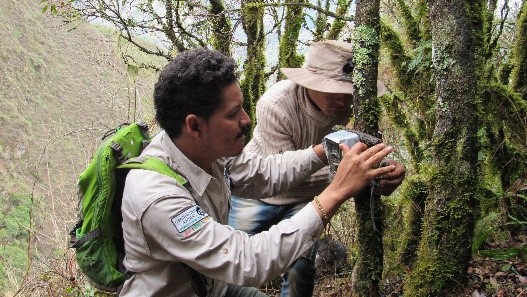 Camera trapping
Camera trapping





